Editor's Note: This article was originally published in September 2022 and updated in October 2025 for comprehensiveness.
Think your collaborative robot is automatically safe? You're not alone.
Thanks to collaborative robots (cobots), manufacturers of nearly any size can now combine precision, adaptability, and safe human-machine interaction to create more flexible automation systems. This flexibility allows companies to respond faster, operate more efficiently, and stay resilient in a changing market.
But as cobots take center stage and their popularity continues to grow, so do the misconceptions surrounding them. The most dangerous myth? That “collaborative” means “inherently safe.”
In reality, safety depends entirely on how and where a cobot operates. Since the cobot’s surge in popularity around 2020, our Certified Safety Professionals have seen a widening gap between perceived safety and actual compliance with international standards.
With that in mind, we want to set the record straight.
This guide will help you understand the truth about cobot safety, what the key standards (ANSI/RIA R15.06, ISO 10218, and ISO/TS 15066) actually require, how they apply to real-world manufacturing, and what steps you can take to ensure your cobot systems are both compliant and productive.
Let’s get into it.
Table of Contents (Jump to a Section)
- Cobots 101: What Are Collaborative Robots?
- Myth 1: Cobots Are Inherently Safe
- Myth 2: Cobots Don’t Need Safeguarding
- Myth 3: Safety Slows Everything Down
- Understanding Robot Safety Standards
- The Bottom Line: Collaborative Doesn't Mean Compliant
- Additional Resources
Cobots 101: What Are Collaborative Robots?
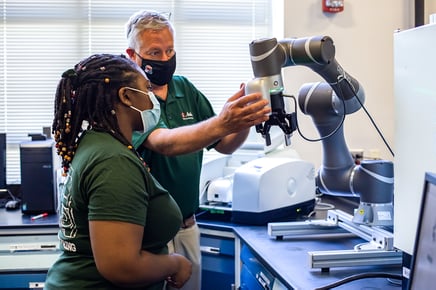
Collaborative robots, or cobots, are a type of industrial robot specifically designed to share workspaces and interact safely with human operators. Unlike traditional industrial robots that operate behind cages or barriers, cobots are built to work side by side with people, avoiding accidental contact and stopping automatically if contact occurs.
To enable these flexible working conditions, cobots are equipped with specialized sensors, actuators, and intelligent control software that enable them to detect and respond to their environment in real-time.
Cobot safety and performance features often include:
- Fast integration – Quick setup and deployment with minimal disruption to existing operations.
- Flexibility – Easily reconfigured for new tasks or production changes.
- “Plug & Play” accessory ecosystems – Broad compatibility with grippers, sensors, and vision systems.
- Speed, power, and force limiting – Some built-in safety functions that prevent injuries during human interaction. (See Myth 1 for critical details)
- Compact, lightweight design – Enables use in tight spaces or mobile workstations.
- Advanced vision and sensing – Allows detection of humans, parts, and workspace boundaries in real time.
- Connectivity and data integration – Seamless communication with PLCs, MES, and IoT systems for smart manufacturing.
- Reduced safeguarding requirements – Designed to operate safely with fewer physical barriers when properly risk assessed. (See Myth 2 for critical details)
While cobots are capable of safe collaboration, they are not automatically safe for every application. True safety depends on how and where a cobot is deployed, and ensuring compliance with international standards is essential to achieving a truly collaborative system.
If you’d like a deeper look at topics such as Cobot Origins, What Makes a Robot Collaborative, and Cobot Design Differences, check out our article, What Is a Collaborative Robot?
Myth 1: Cobots Are Inherently Safe
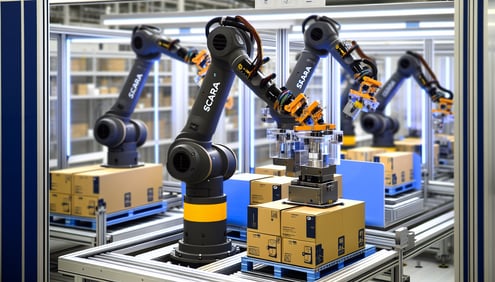
Myth: “Cobots are inherently safe and don’t require guarding.”
Fact: While cobots are designed for safe collaboration, they are not automatically safe in every application. The level of safety depends entirely on how and where a cobot operates. According to ISO 10218 and ISO/TS 15066, every cobot installation requires a formal risk assessment to identify potential hazards, evaluate interaction points, and determine appropriate safeguards.
Each setup must consider:
- Workspace layout and operator proximity
- Task type and material handling requirements
- Potential impact forces and reaction times
Cobots are designed with native safety features, including speed and force limiting, smooth and pinch-free hardware, and advanced sensing capabilities. However, these features only reduce risk: they don’t eliminate it. Even a small variation in the environment or application can introduce new hazards that must be mitigated.
Understanding Collaborative Operating Modes
ISO 10218 outlines four collaborative operating modes that define how humans and robots can safely share a workspace:
- Safety-rated monitored stop – The robot halts safely when a person enters the workspace.
- Hand guiding – The operator manually guides the robot for teaching or positioning.
- Speed and separation monitoring – Sensors maintain a safe distance between the robot and human.
- Power and force limiting – The robot inherently limits output forces to safe thresholds.
Even if your cobot supports all four modes, a risk assessment is still required before deployment to verify that your application is truly collaborative.
Cobots often support collaborative tasks such as material handling, assembly, and quality assurance; however, the degree of human interaction will always determine the level of machine safeguarding required. Many applications still require light curtains, safety scanners, or barriers to ensure full compliance with safety regulations.
|
If you’re unsure about what safeguards your system needs, our Certified Safety Professionals can help you perform a complete risk evaluation and design a compliant setup. Explore MPSA Risk Assessment Services today! |
You might be asking: “If cobots still need safeguarding, why not just use traditional industrial robots?” Let’s take a look at that next.
Myth 2: Cobots Don’t Need Safeguarding
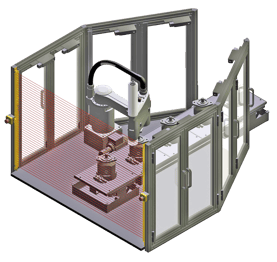
Myth: “If cobots still require guarding, why not just use traditional robots?”
Fact: Even though collaborative robots are designed for safe interaction, they are not entirely free of safeguarding requirements. However, when properly risk-assessed and operated within verified collaborative modes, cobots can significantly reduce the amount of physical guarding needed compared to traditional industrial robots.
According to ANSI/RIA R15.06, safeguarding requirements depend on the specific application, environment, and level of human interaction. A thorough risk assessment determines how “collaborative” your setup truly is and what additional safety measures are required.
Cobots typically require less physical guarding, which helps:
- Minimize workspace footprint and preserve open floor layouts
- Increase flexibility for changing workflows or mobile workstations
- Simplify integration into existing production environments
- Enhance collaboration between operators and automation systems
In many cases, instead of large physical barriers, cobots rely on smart safety devices such as light curtains, safety laser scanners, and safety-rated relays. These tools dynamically monitor the workspace and adjust robot behavior to maintain compliance without sacrificing productivity.
| Explore our Safety Sensors and Light Curtain Solutions to learn how to create safer, more flexible automation systems. |
If you’re evaluating whether a cobot or a traditional industrial robot is the right fit, start with a workspace review and risk assessment. This will help determine the level of safeguarding required and ensure your automation solution is both safe and efficient. For a quick overview, check out our visual chart comparing Industrial Robots vs. Cobots for an easy reference.
Industrial Robots vs. Cobots Checklist
A visual chart comparing Industrial Robots vs. Cobots
| Feature | Traditional Industrial Robot | Collaborative Robot (Cobot) |
| Risk Assessment Required | ||
| Physical Guarding | Extensive (Fences, barriers) | Reduced (Sensors, scanners) |
| Collaborative Modes | ||
| Power/Force Limiting | ||
| Speed Flexibility | Fixed | Adaptive |
| Human Interaction | Restricted | Designed for safe coexistence |
Myth 3: Safety Slows Everything Down

Myth: “Following all these standards will make my cobot slow.”
Fact: A safe cobot system doesn’t have to be a slow one. When designed correctly, safety and productivity go hand in hand.
Cobots are designed to automatically adjust their operating modes in response to real-time sensor input. When a person enters the shared workspace, the cobot switches into collaborative mode, limiting its power, speed, and force to meet safety requirements. Once the area is clear, it can transition back into automatic mode and run at full speed, all while staying compliant with ISO 10218 performance criteria.
This dynamic adjustment enables manufacturers to maintain high throughput without compromising worker safety. By following standards such as ANSI/RIA R15.06, cobot systems can maximize uptime, optimize workflow, and protect operators, proving that safe automation is also smart automation.
Programming precision is key. Engineers must account for reaction time and stopping distance, the brief delay between when a safety sensor detects motion and when the cobot physically stops or changes modes. Properly calculating these values ensures smooth, safe transitions between collaborative and automatic operation. Contact our experts for support.
Success Story: Safety That Drives ProductivityA real-world example of successful cobot implementation comes from Coty, the global cosmetics manufacturer. According to Industrial Tool.com, in 2025, Coty deployed Universal Robots’ UR3e and UR5e cobots on mobile carts to automate dusty packaging tasks. The result: $500,000 in annual savings and the redeployment of 13 workers into higher-value roles, all while maintaining compliance with international safety standards. So, when implemented thoughtfully, cobot safety standards don’t slow production down; they create a safer, leaner, and more efficient operation. |
Understanding Robot Safety Standards
The three most relevant standards for cobot safety are ANSI/RIA R15.06, ISO 10218, and ISO/TS 15066. Together, they form the foundation of global robot safety, defining how robots are designed, installed, and operated alongside humans.
ANSI/RIA R15.06 – The Core U.S. Standard
This American standard, developed by the Robotics Industries Association (RIA), aligns closely with ISO 10218 to define safety requirements for industrial robot systems and system integration in North America. It outlines the responsibilities of both robot manufacturers and system integrators to ensure the safe operation of robots.
Key areas covered include:
- Comprehensive risk assessment procedures
- System design and installation requirements
- Validation of safety functions
- Operator training and documentation
In essence, R15.06 ensures accountability throughout the robot’s lifecycle, making both the manufacturer and the integrator responsible for safe implementation.
ISO 10218 – The Global Foundation
The ISO 10218 standard, split into Part 1 (Robots) and Part 2 (Systems Integration), serves as the international backbone of industrial robot safety. It defines how to design, integrate, and operate robots safely in any environment.
Key provisions include:
- Collaborative workspace design principles
- Safety-rated control systems for monitoring performance
- Protective stops, guards, and sensors to prevent contact injuries
- ISO 10218 also establishes the four collaborative operating modes:
- Safety-rated monitored stop
- Hand guiding
- Speed and separation monitoring
- Power and force limiting
These are foundational for every compliant cobot deployment.
ISO/TS 15066 – The Cobot-Specific Standard
To address the unique nature of human-robot collaboration, ISO introduced Technical Specification 15066, which builds upon ISO 10218. This document focuses specifically on collaborative robot operation, detailing how humans and robots can safely share workspaces.
Key inclusions:
- Maximum permissible contact forces and pressures for different body regions
- Testing methods for power and force limiting
- Guidance on speed and separation monitoring thresholds
The guiding principle: the closer the human-robot collaboration, the tighter the speed, power, and force restrictions must be.
In short, ISO/TS 15066 transforms a robot from “collaborative in name” to collaborative in compliance. It is the key document that turns general safety principles into measurable, testable criteria for cobot design and operation.
Real-Time Risk Assessment: Safety Engineers Break Down a Robotic Cell Failure
For a deeper exploration of how these standards translate into real-world machine safety practices, watch our video: Bad Industrial Robot Cell Accident - Live Risk Assessment & Solutions | Safety Experts React |
The Bottom Line: Collaborative Doesn't Mean Compliant
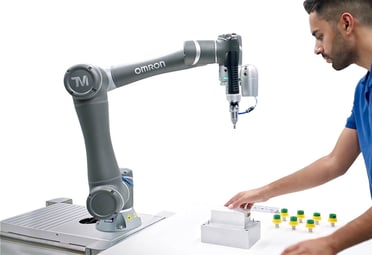
Cobots offer incredible potential, faster integration, flexible workflows, and safer human-robot interaction, but only when deployed correctly.
Remember these three critical truths:
| 1. Every cobot needs a risk assessment: regardless of its built-in safety features 2. Reduced safeguarding ≠ no safeguarding: smart sensors often replace physical barriers 3. Safety and speed aren't enemies: proper implementation maximizes both |
The gap between "collaborative by design" and "compliant in practice" is where accidents happen, production stalls, and investments fail to deliver ROI.
Don't leave safety to chance. Whether you're planning your first cobot deployment or optimizing an existing system, our Certified Safety Professionals can help ensure your automation is both compliant and productive from day one.
Ready to get started?
Speak with a Certified Safety Professional
Keep Learning! Review the additional resources for more information on cobots.
Additional Resources
- Watch The Full On-Demand Webinar For Free
- Omron Product Page
- What Is Industrial Robotics?
- What is a Collaborative Robot?
- Maximizing Efficiency with Cobots: The Future of Collaborative Automation
- Robot Safety Standards 101: Developing a Safe Environment with Industrial Robots
- The Smart Flex Effector by Bosch Rexroth | Revolutionizing Automation Processes
- Airline YouTube Channel
- Technically Speaking Blog





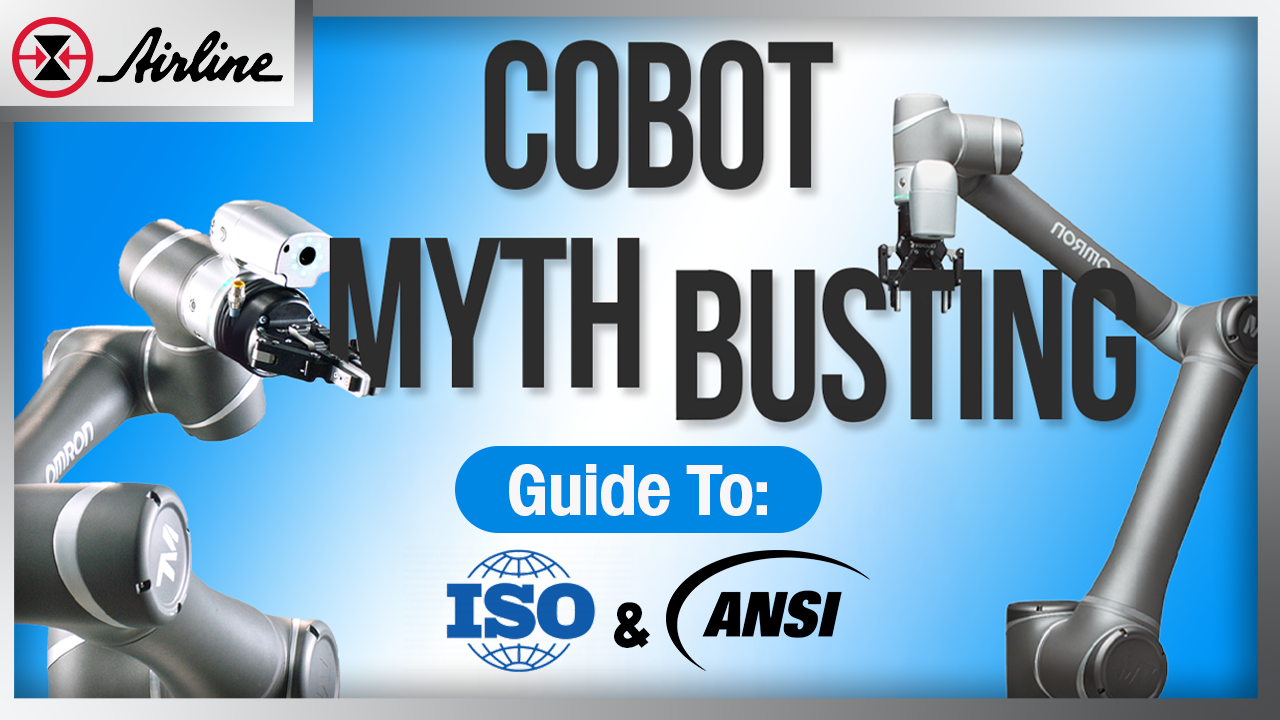




Leave Comment